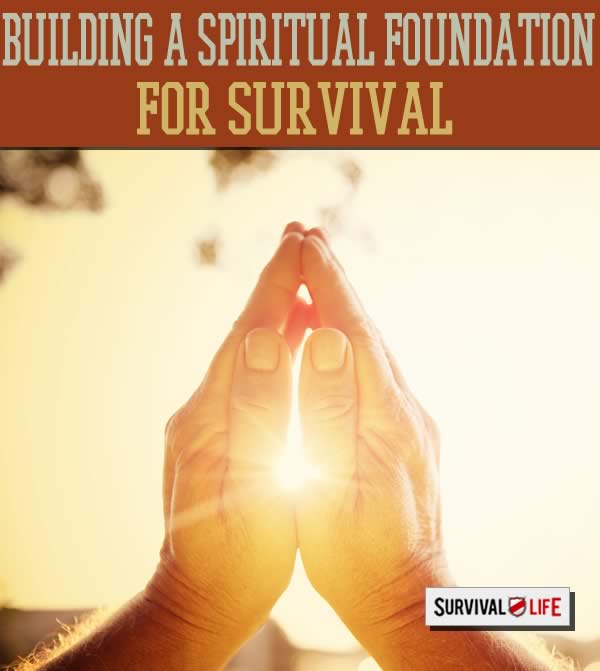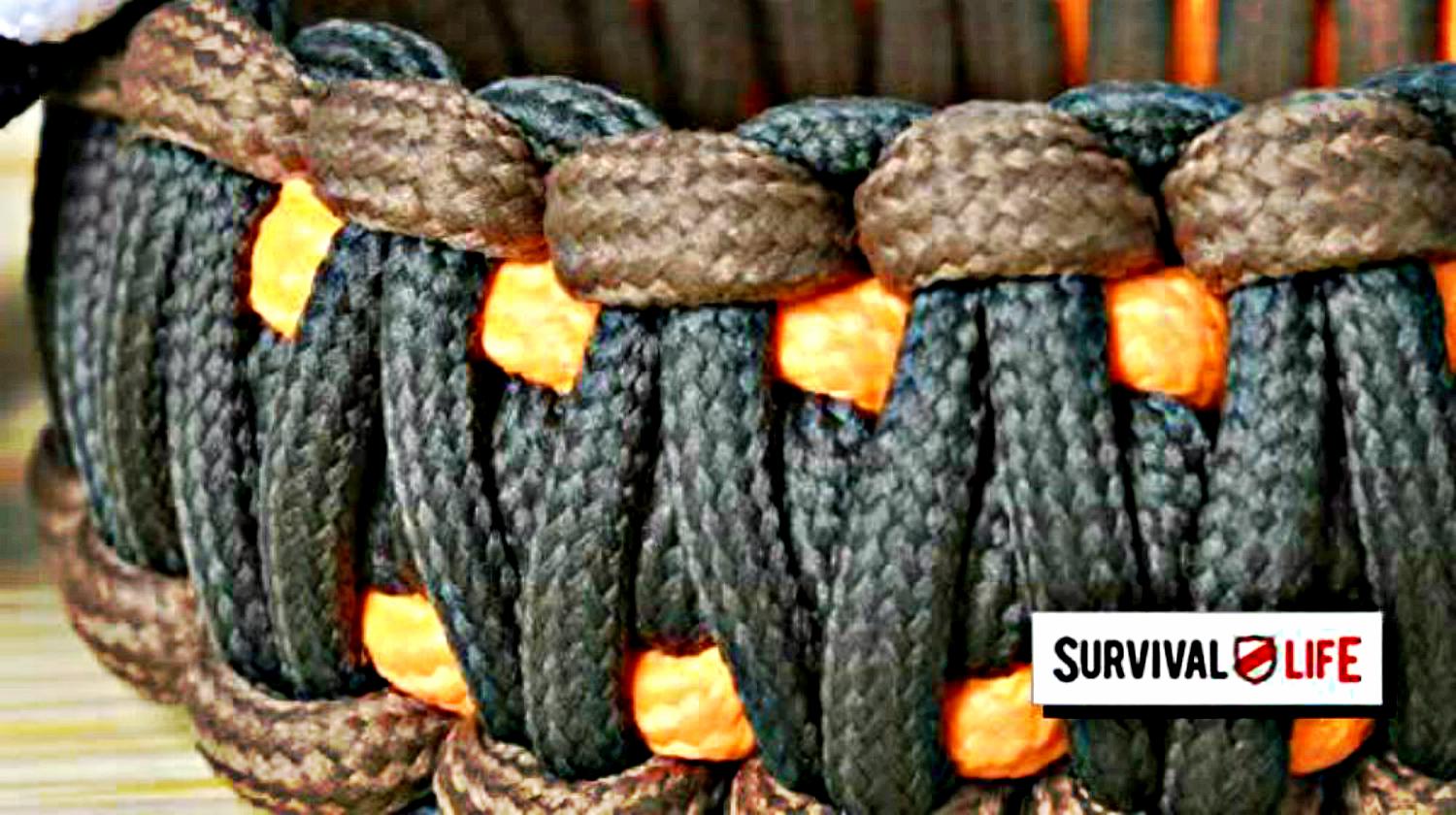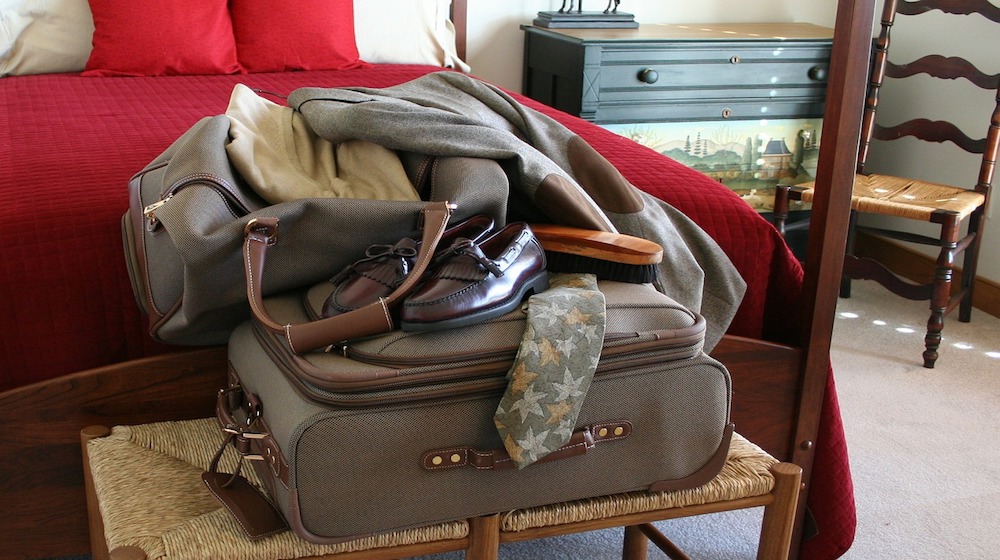Bug Out Bag
How to Instantly Cut Pounds and Ounces Off Your Bug Out Bag

I've been trying to put together the perfect bug-out bag for a long time now.
I kept taking things out and replaced them with lighter, smaller alternatives.
Some of them ended up back in, because I realized they were better and safer, and my family`s safety comes first.
However, I`m still not over trying to shave off as much weight as possible, looking for ways to save space to fit in more crucial items, while keeping it light enough to carry around without breaking my back.
How To Pack The Best Bug Out Bag
In time, I learned that there are certain techniques you can successfully use to save maximum space while keeping everything necessary. Here are 6 of them:
#1: Fill every inch of space
Take boots for example. If you`ve got a pair of spare boots in your bug-out bag, fill them up with other items, whatever you can get in there. Roll underwear and socks tightly and shove them inside your shoes.
Better yet, you can use them to protect fragile objects. Roll the fragile item in a piece of cloth (that you can use further, such as a bandana or a shemagh). Put it in the boot, make sure it stays fixed and, eventually, if there`s more room, cover everything with a pair of rolled socks, just to make sure it`s fully protected.
Here`s another tip. If you pack duct tape (and I strongly suggest you do!), unroll it off its original carton and roll it on a pill container or a bottle. Another way to save space with duct tape is to remove the carton and smash the duct tape on a flat surface. Simple as that!
#2: Use space bags
In case you don`t know what space bags are or how to use them, here`s a video that shows you every step of the way, as well as what you should and should`t pack in them:
These bags saved me a whole lot of space in our bug-out bags. And I do mean a WHOLE lot. But here`s the problem with them: once you open them, everything in there is going to get back to its regular size. Therefore you won`t be able to pack it back up when you don`t need those clothes anymore, because you`d need a vacuum to reseal the bags.
This is a downside that I`m not happy about, but I decided to use space bags anyway. It`s better to carry around some extra clothing when I`m not using it, than to suffer from cold or wear miserable clothes simply because I have no other change in my bug-out bag.
Now, it`s your choice whether you use space bags or not. I suggest you try them out and see if it`s convenient to you. You can`t really make the decision until you see just how much space you can save.
#3: Load up on freeze-dried foods
There`s a bunch of reasons why you should take (mostly) freeze-dried food with you when you bug-out. Here are the most crucial 3:
– It takes up little space and it`s extremely light-weight
Freeze-dried food loses 98% of its water, so it literally cannot get any lighter than that!
– It lasts up to 30 years
However, you have to take temperature into consideration. If you store it at high temperatures or subject it to brutal temperature changes, it will spoil sooner.
– It offers variety
This is my favourite thing about freeze-dried food: it`s diverse. I can pack the ones my family loves and offer them the meals they`re familiar with, even in stressful times of disaster. This is the kind of comfort that everyone needs when SHTF.
#4: Use multiple-use gear
And when I say multiple-use gear, I`m not referring strictly to those knife + fork + spoon + compass + whistle sort of tools. Those are great if they`re good quality. If they`re cheap, don`t bother to buy them. They won`t save space, just the contrary. They`re absolutely useless, so why carry useless things with you when you could fill that space with items that could actually save your life? My advice is to invest in a good multiple-use tool or not invest at all.
But besides these tools, there are plenty of other items with multiple purposes that can save a lot of space. For example:
– Bandanas or shemaghs (cover your head if it`s too sunny, prop a broken limb, protect your airways from wind and dust, stop the bleeding etc)
– 550 cord (you can make one of those 550 cord bracelets and wear it around your wrist, not in your bug-out bag)
– Potassium permanganate (water purification, wound sterilization, fire starter)
#5: Replace tents with tarps
Warning: I do NOT suggest this method during the cold season!
Replacing a tent with a tarp may be the most clever thing you can do to shave off weight off your bug-out bag. A tarp is a multiple-use item, it`s light-weight, resistant to wind and rain and it`s very easy to carry around.
You can spread it on the ground if it`s wet or muddy. You can make a perfectly secure shelter if you want to protect yourself from rain or sunlight. You can use it as a wind stopper. You can sit down on it to eat with your family. You can also wrap other items in it to prevent them from getting wet. You can make a stretcher so you carry injured people around. Or you can even wrap a tarp around a person, to maintain body heat.
However, replacing tents with tarps is not the best idea during cold season, as tarps do not offer full isolation. That`s why I only recommend tarps in spring and summer.
What's your take?
Do you have your own tips and tricks that shave a few pounds off of your B.O.B.?
Feel free to share them below.
Read more with these related articles on our site:
- The Ultimate Bug Out Bag List
- Your First Bug Out Bag – 50 Essentials For Your Kit
- 10 Multipurpose Items for Your Bug Out Bag
Follow us on Facebook, Instagram, Twitter, Tumblr, and Pinterest!
***Disclaimer: The contents of this article are for informational purposes only. Please read our full disclaimer.***
Editor’s Note: This post was originally published on October 25, 2013, and has been updated for quality and relevancy.
-

 Paracord Projects1 year ago
Paracord Projects1 year agoParacord Projects | 36 Cool Paracord Ideas For Your Paracord Survival Projects
-

 Paracord Projects1 year ago
Paracord Projects1 year agoHow To Make Paracord Survival Bracelets | DIY Survival Prepping
-

 Medical Care1 year ago
Medical Care1 year ago21 Home Remedies For Toothache Pain Relief
-

 Knife Laws1 year ago
Knife Laws1 year agoAre Switchblades Legal? Knife Laws By State
-

 Do It Yourself1 year ago
Do It Yourself1 year agoSurvival DIY: How To Melt Aluminum Cans For Casting















CRYSTAL
October 25, 2013 at 10:39 AM
FOR THE SPACE BAGS: PAC THEM AS USUAL AND HAVE A PERSON LIE DOWN ON ONE END AND ROLL TOWARD THE OTHER. IT WON’T BE AS FLAT AS THE REGULAR METHOD- BUT THEY WILL BE MUCH FLATTER.
Barker
October 26, 2013 at 10:20 PM
Space Bags and Zip Locks solution: Just suck the air out of them and it’s just as good. Some small air pumps can be reversed to suck the air out.
q
October 25, 2013 at 10:45 AM
For yearsi have used large ziplock bags in place of more expensive space bags. The 2-gallon bags are great for storing items that need to remain dry in a backpack (read B.O.B./G.O.O.D. bag). Though the ziplock bags do not seal as well as the space bags, they also do not require the use of a vacuum to remove the air. Some of the older space bags don’t require a vacuum either. Instead of pulling the air out with a vacuum, one would roll the bag from bottom to top to purge the air from the inside. It doesn’t get all of the air out but once you get the hang of it you can remove a pretty good amount. Just an idea.
betty
October 25, 2013 at 7:43 PM
to get the air out of the ziplock bag, just sit on it with a firm base under the bag.. zip it shut and the air is out.. easy to open and reseal. have used them multiple times take up 1/8 the space.
Mike Greene
October 26, 2013 at 10:45 AM
Ziplock now has vacum seal bags for feezer use. It comes with a manual vacum tool. That might be too big for a BOB, but it might not be.
Ray Mason
October 31, 2013 at 9:13 PM
I use my Ziploc vacuum bags with manual tool all the time around the house. Works great and is simple to use. Ray
Bev
October 25, 2013 at 10:48 AM
An alternative to space bags is to use oversized (2.5 gal & up) zip lock bags. After placing items inside the bag, roll it up from the bottom to push out as much air as possible before sealing the zipper. It will create a natural vacuum and be almost as flat and just as lightweight as the space bag. This can be repeated as often as needed and is less expensive, too. 2.5 gallon bags are sold at grocery stores and Wal-mart. Larger bags are sold at places like Home Depot in the storage bin area.
Kris
October 25, 2013 at 10:59 AM
They also make travel space bags that are meant to be rolled to get the air out. http://www.amazon.com/Travel-Smart-Compress-Saving-Packing/dp/B004HCC9VA/ref=sr_1_1?ie=UTF8&qid=1382716683&sr=8-1&keywords=travel+space+bags
Det
October 25, 2013 at 11:08 AM
Yes, yes…pack stuff in the boots, space-saver bags, etc. Former Army, so that I know…however, it does NOT decrease the weight; you still have all the same stuff AND have now added more space so you can cram in more gear. Take only what you think you will need for however long you think you may be away from home base.
Lucy Mauterer
October 26, 2013 at 11:02 AM
The concerning factor is that we don’t always know how long we will be away from home base.
Don
October 25, 2013 at 11:20 AM
I have used space bags in my BOB for years. While it is true they will not be AS flat once you open it, they still save space. You can also use the bag for other purposes, cushioning a broken limb or wound, insulation on the ground, etc, etc.
Desert Fox
October 25, 2013 at 11:22 AM
I have just replaced my canned food with freeze dried pouches…much lighter, however, how can you keep them from becoming ‘flour’ in your pak? I have to provide a lot of space to keep them from smashing up! Yes? Thanks
peter
October 25, 2013 at 11:23 AM
Just a rehash of the ultralight camping book i read 10 yrs ago. better info and products, Jardon tells you how to sew your own bag, if you google ultralight camping.
Dianne
October 28, 2013 at 8:51 PM
Very good tip. I highly recommend reading all kinds of ultralight info. Also, YouTube has lots of ultralight info, including how to make a lot of your own gear. I designed & made my own backpack out of parachute fabric that I purchased on eBay. It weighs in @ 11 oz, even though it has waist & sternum straps. It easily holds all of my gear. I made a poncho & several stuff sacks from the same parachute fabric. All of my gear, including my tent, sleeping bag, pack, etc, weighs in @ 15#. You must remember that food & water are variable weight items, since they get replenished & depleted. Much of what we think we “need” for survival is really “want” & “luxury”, if we are truly being honest. You’ll be surprised what you actually need, especially after carrying that weight around for any length of time.
jonathan ramey
October 25, 2013 at 11:26 AM
As far as reusing the space saving bags. Do not worry about not having a vacuum cleaner to suck the air out of your bags. Use your mouth to suck the air out of the bag. It is so obvious its almost to easy to think you need a mechanical device to do it. I myself have space saving bags and have tested the use your own mouth. It works just fine. It may take a few breaths but you certainly can reseal and flatten the bag with just human power.
Desert Fox
October 25, 2013 at 11:30 AM
Great idea in filling up those boots with underwear, socks, etc. – make sure you put a small bag in it first so when you have to empty your boot/shoe to put your feet in, your small items aren’t left everywhere…or just pull the bag to fill the other shoes. Also, make sure you have two small plastic bags for each shoe to be repacked so you don’t mud up the inside of your pak. I do this when packing shoes in a suitcase. Save those bags you bring veggies from the market…they are perfect.
Lee
October 25, 2013 at 12:30 PM
There is just the two of us. I like to dry my own food, fruits, some jerky etc. I found in the grocery store Ziploc vacuum freezer bags. This does a good job for keeping moisture off my dried food. It has a hand pump that creates the vacuum. This works well for small clothing items underwear, socks etc. Then you have small bags. If you put a pump you can use the bags again. Not sure if the pump would work for the larger bags but might be worth trying.
Dennis
October 25, 2013 at 6:52 PM
Getting lighter has to be a top priority as you get older. Also, physically hump your pack for a mile or two along a trail or low traffic road. Learning how to pack for hiking also takes time and gives you an idea of how much you can carry. My favorite backpack is a “freighter” pack that is very comfortable to carry. I have a couple of other packs, supposed to be more ‘comfortable’ by all the ads, but they just don’t carry the weight comfortably.
I used to be able to hump 40 plus pounds all day in the service. Age and wear and tear on the body have reduced the practical weight to about 20 to 25 pounds. Regular backpacks limit me to 5 to 15 pounds due to lack of proper design etc.
Getting and keeping your body in shape is just as important as what’s in the pack!
Ted
October 25, 2013 at 8:11 PM
I use vacuum seal bags from foodsaver and pack my stuff more individually. The extra plastic you get in packing that way is easily saved by sealing the stuff. It gets a little pricey but the bags keep everything nice and dry and free from insect or O2 degredation just in case. Some of the stuff I keep in my bag I don’t want to change out every couple of months so I can leave it all in there. Plus you can write on the bags for dates and contents etc.
kaytee
October 25, 2013 at 8:49 PM
Re: paracord bracelets.
Consider them a “fashion statement”, and if you wear them, don’t rely on them for weight-bearing applications. The edges will get abraded, thus weakening the cord.
Dutch Kinderknecht
October 25, 2013 at 9:41 PM
I pack many of my “low probability for use” items in “food saver” type vacuum seal pouches. For instance, I have a change of clothes ready in a zip-loc bag; but things like a third pair of underwear, jersey gloves, knit cap, etc. shrink enormously–and the seal is absolutely tight! I have a whole roll of toilet paper sucked down to about the size of two pieces of toast, and it has been in my BOB for nearly two decades.
Another thought is to “pack in pairs” when possible. By that, I mean find a BOB-buddy and share the load. You don’t both have to pack larger items: one carry a machete, the other carry an entrenchment tool. One two-person tent is usually lighter than two one-person units. You get the idea.
Brindley
November 4, 2013 at 11:55 AM
Do you recommend single or double ply toilet paper?
Dean
October 25, 2013 at 10:51 PM
Don’t forget to pack that mess kit of yours also. Mine has 8 bags of oatmeal . Four instant coffee and four tea bags. And it is all in the Military WWii style mess kit. Also any thing in my pack that can get wet and damaged goes into Freezer style bags. They are tougher than the regular zip lock bags.
Marcia
October 25, 2013 at 11:13 PM
Freezing food in ziploc bags, you can use a straw to create more of a vaccuum; insert, seal the zip up to the straw, and suck out the air. Then slip out the straw as you pinch the bag shut.. It works better than rolling. Sam principle applies to anything you store in the ziplocs.
Desert Fox
October 26, 2013 at 1:51 PM
Just to add: if you oil (slightly)the zip part of the ziplock bag…it will never leak!
A Baker
October 25, 2013 at 11:36 PM
Ahhh, yes – duct tape – two other alternatives for storing duct tape.
1 – wrap your ducttape around a short pencil – multiuse and space saving,
2 – my favorite – use an old electronic hotel key card or something similar and wrap the tape around it. You can easily put 3 or 4 feet of duct tape around this card and have a nice, flat package which fits in a wide variety of places.
Another experience discovery – the rainfly from an old tent (or newer one) packs nicely into a small area and is very easy to rig as a tarp.
Waaaay cheaper than the high dollar lightweight tarps that you can but from outdoor supply places, works as well or sometimes better (not always tho) and you can usually find an old beat up tent at Goodwill or St. Vincent for next to nothing – the rain flys (flies?) seem to survive well.
Be Smart.
Be Safe.
Be Prepared.
AB
Dave
October 26, 2013 at 9:00 AM
How does “use every inch of space” save weight ?
Same question for space bags. Space, or cubic, is one thing … but weight is another.
Compressing weight into a smaller cubic is still the same weight.
BKJ
October 26, 2013 at 9:13 AM
If you want the older alternative for the space bags, use compression sacks — and likely the waterproof ones since they can be more easily multipurposed (water container, emergency mitten/boot, etc.) and could be strapped on the exterior of your pack if needed. Usually you have straps to tighten to get the air out. They are usually cylindrical though, not flat, and I suspect your 3 piece suit will end up a bit more wrinkled.
Lucy Mauterer
October 26, 2013 at 11:11 AM
Lol! When I first read the headline I thought B.O.B stood for Big Ole Butt! I could use advice on that too! But here’s what I use for my toothbrush; just get one of those tiny throw-aways and use it instead. It works as well and is 1/3 the size. Instead of toothpaste, a ziplock baggie of baking soda works and is not as heavy either, depending on how much you try to cram into the bag. And one extra pair of socks and undies should do it if you have a water source. You can buy soap that comes in very flat, thin leaves. Also consider carrying some things in your pockets instead of putting it in the bag. Distributes weight better.
Great Grey
October 26, 2013 at 7:47 PM
Lucy
If anything is more important than good feet, it is good teeth. Scrimping on a toothbrush is not worth the risk if you wind up in a prolonged bug out also, the travel toothbrush is to small for me to use easily. And it may also be a good idea to have set of toothbrushes for every member of your group in every bag.
Ferdo
November 4, 2013 at 3:54 PM
I agree. Tooth brush just like you use at home…
Quilty
October 26, 2013 at 9:11 PM
Good advice. I do need to take everything out, reconsider their usefulness and repack. Rick now I have it all in a backpack, that while not huge, is packed very tight and is very heavy. Wish I could depend on the buddy system and have two bags. What size bags are you all using? With food, tools, TP, tents and ponchos I do not even have room for ANY clothing or water or fuel. Those are separate in the car.
Al
October 27, 2013 at 12:33 AM
Dehydrated foods do offer a LOT of options, variety etc, and store for a long long time. I keep some as well as MRE components, and even quicker items like granola bars that I constantly rotate out. The drawbacks to dehydrated is they require a lot of water and are expensive. Sure if you have to boil questionable water anyway, you might as well use it for cooking. Rice and beans, oatmeal and other common grocery store dried items can be a good cheap options as long as they are rotated.
Bob
October 27, 2013 at 3:29 PM
The duck tape storage take the card board core out of the roll then flatten it wrap it with litter tape put it in a zip lock
Kyle
October 28, 2013 at 9:30 PM
One thing I learned when I was in the military is to make sure you have dry socks and underwear. What we did before going to the field was pack a pair of socks, underwear and a tshirt into a ziplock bag and squeeze all the air out before zipping. Do that will several sets so if it rains you will have dry socks/ underwear
Ray Mason
October 31, 2013 at 9:22 PM
Large leaf bags make excellent raincoats.
Ferdo
November 4, 2013 at 3:52 PM
Replacing a tent with a tarp is insane. Comfort is important you are not really saving anything and bug protection is every bit as important as rain/snow protection
Chris
November 18, 2013 at 8:10 PM
Like your comments about multiple use gear. Those paracord bracelets can be used for so many things and may save your life.
JOHNNY3H
November 21, 2013 at 10:36 AM
@ Dianne, Back in the latter 2/3 of the 50s I went through Cub Scouts, Boy Scouts, and Explorer Scouts. My Scout Troop and Explorer Post both emphasized hiking, camping, and trekking.
That meant humping everything for up to a week and after our first trip to Philmont Scout Ranch [that means “real mountains” to us “flatlanders” from the Texas Gulf Coast]we determined that store bought tents were too heavy so we decided to make our own tents from military surplus parachutes.
Thankfully we finished them in time to test them on a weekend camping trip. And did we ever get some unwelcome surprises:
1] During daytime, they provided NO protection from the sun; it penetrated THE LOOSE WOVEN PARACHUTE SILK and burned us just like the single layer of silk wasn’t even there.
2] The EXACT SAME THING happened when it rained; the velocity of the raindrops caused each single droplet to break into dozens of smaller particles [actually a FINE SPRAY] while passing through the loose weave of the parachute silk, just like it wasn’t there!!!!!
So, on that second summer’s Philmont trip we humped ordinary tents [GI surplus shelter-halves, @ 2 per Scout = 1 small tent].
Chris
January 15, 2014 at 6:02 PM
The newer space bags are much better then the ones of old. the new ones have a better sealing system then the old ones. I have some that are 10 years old and the sealing system on them has worn out and they leak.
One problem with the new ones is, what happens if you have no power how are you going to suck the air out of the bag? One way would be to have a manual suction pump or another way would be to roll the bag from one end to the other pushing the air out.
Barbara
January 25, 2014 at 4:21 AM
There are Space Bags that you simply roll to get the air out. You don’t need a vacuum for these. If you shop places going-out of business, year-end sales, wholesale,clearance, or garage sales, you can get good brand stuff really cheap.
Chris
February 6, 2014 at 7:54 AM
Don’t use a tarp if u want to save space use a military poncho
Pingback: Significant Factors For Survival Equipment – Straightforward Advice | Alyfutef
Pingback: Simple Survival Gear Bags Advice Revealed | Alyfutef
Pingback: Outlines For Significant Aspects In Survival Gear Bags | Alyfutef
Pingback: Core Criteria Of Survival Gear Described | Alyfutef
Pingback: A Survival Article Will Aid in Preparing You for Undecided Conditions
Pingback: Bug Out Locations | Where To Go When The SHTF | Survival Life - Survival Life | Preppers | Survival Gear | Blog
Pingback: Ultra-light Resting Bags | IQ Test
Pingback: Ultralight Resting Bags | HTML5 Webdesign
Dave
April 28, 2014 at 10:38 PM
I recently eliminated the cook kit from my BOB. I carry a S/S water bottle in which I can boil water. Make sure the bottle has no plastic that would melt. With boiling water and a light weight cup I can prepare freeze dried foods, coffee, tea, chocolate, ramen noodles, oatmeal, etc. I replaced my heavy Katadyn filter for a Sawyer. Huge difference in weight. I am experimenting with removing my stove and using an esbit with fuel tabs. Need to verify it will indeed boil water in my water bottle.
Al
August 25, 2014 at 1:38 PM
Do not get an Esbit stove! I make some excellent fuel for those stoves and like making money but not at the expense of an honest person’s life. Look up the Core stove. It is just coming on the market. I like it better than my emberlit. Either will be good because they burn almost anything found on the ground. Esbit is great for weenie roasts and marshmallows. It is gone quickly and once exposed to the elements, breaks down too quickly. Aluminum foil is something that everybody needs in their SHTF bag. I can’t believe that it is never mentioned!
Pingback: Ultra-light Resting Bags | Aging
Pingback: Survival Life » Blog Archive » An Endurance Blog Will Assist You To Get Ready During Indecisive Periods
Pingback: Preparing The Essentials For Your “Bug out Bag” | Survival Life
Pingback: Customizing Your Ultimate Bug Out Bag | Survival Life - Survival Life | Preppers | Survival Gear | Blog
Pingback: Gotta Get Your Outdoor Equipment | Tmall
Pingback: Gotta Get Your Outdoor Equipment | Aging
Pingback: When The Hammer Drops | How to Instantly Cut Pounds and Ounces Off Your Bug Out Bag – Survival Life | Preppers | Survival Gear | Blog – Survival Life | Preppers | Survival Gear | Blog
Pingback: When The Hammer Drops | How to Instantly Cut Pounds and Ounces Off Your Bug Out Bag
Pingback: Light Journey – Carry-On Only | Siraga NAI
Pingback: A New World History Bass | earnshow
Pingback: A New World Record Bass | bipo chat
Pingback: A Survival Article Will Aid in Preparing You for Undecided Conditions
Pingback: Root Criteria In Survival Equipment – An Introduction | A Mommy Story
Pingback: The Options For Key Aspects Of Basic Survival Skills | Reality On Bravo
Pingback: Critical Factors In Survival Equipment Described | Reality On Bravo
Pingback: Key Criteria In Survival Gear Considered | Bookworm Room
Pingback: No-fuss Survival Equipment Advice – A Closer Look | Life With Monkeys
Pingback: Finding Fast Systems In Survival Skills « Life With Heathens
Pingback: Speedy Methods In Survival Gear Bags Across The Uk | Cute Overload
Pingback: Uncovering Secrets Of Survival Life | Violet Eclipse
Pingback: Easy Systems In Survival Gear Bags – The Facts | Jilbean
Pingback: Real-world Survival Life Systems – The Best Routes | Susan Suarez
Pingback: Understanding Speedy Secrets Of Survival Gear | Shai Coggins
Pingback: Convenient Advice In Survival Gear Explained | Queen of Spain
Pingback: A Spotlight On Quick Methods For Survival Gear Bags | A Piece of Peace
Pingback: Convenient Survival Gear Advice – What’s Needed | Sarah and The Goon Squad
Pingback: Picking Out Rapid Systems For Survival Gear | Virtual Assistant
Pingback: Learn how to Filter Water to Enhance Outdoor Survival Skills | Fetish Parties
Pingback: Learn how to Filter Water to Improve Outdoor Survival Skills | Meisaku
Pingback: Learn to Filter Water to Enhance Outdoor Survival Skills | Otoko Emoji
Pingback: Learn to Filter Water to Boost Outdoor Survival Skills | All Rock Lyrics
Pingback: Revealing Fast Products In Survival News | Marisa’s Dandelion Patch
Pingback: Simple Products Of Survival Gear Bags – The Options | Adventures of An Aussie Mum
Pingback: What It Signifies to Live a Life Off the Grid | Survival Life
Pingback: Trouble-free Programs Of Survival Skills – Some Insights | Reality On Bravo
Pingback: Survival Life Features First Aid In Blog | dwgpr.com
Pingback: What It Means to Live a Life Off the Grid | Survival Life
Pingback: Get the Most Excellent Survival Blog to Get Prepared | Survival Life
Pingback: Ultra-light Bags – The Lightest Out There | Qihangnet
Pingback: Ultra-light Backpacks – The Lightest On The Market | Jianfeibanfadaquan
Pingback: Ultralight Bags – The Lightest On The Market | Deli Toyama
Pingback: Learn to Filter Water to Boost Outdoor Survival Skills – Gdstbj
Pingback: Learn to Filter Water to Improve Outdoor Survival Skills | River Side Appeal
Pingback: Basic Survival Skills That Each Person Must Know | Survival Life
Pingback: What You Don't Have In Your Bugout Bag - Survival Life - Survival Life